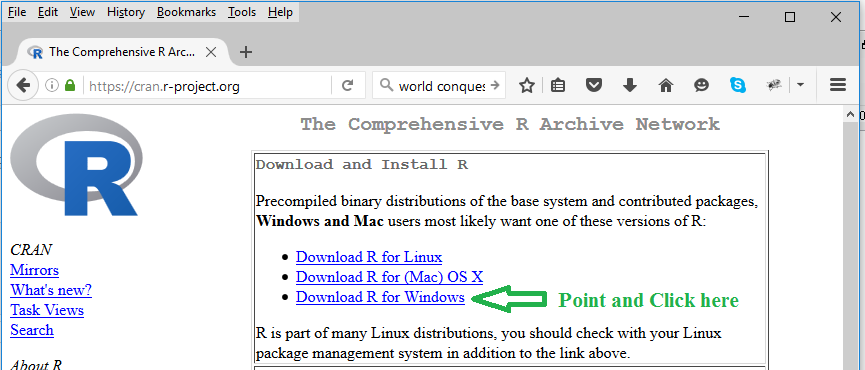
Some packages are installed by default, all others must be installed by running install.packages("name of the package") (do not forget "" around the name of the package!). You are then able to use this package (and all functions built inside this package) for free. Remind that R is open source everyone can write code and publish it as a package. Everything else must be installed from packages. Only fundamental functionalities come with R.

The last pane (blue) is where you will find everything else such as your files, the plots, the packages, the help documentation, etc. In this pane you can also see a tab with a history of the code executed and a button to import a dataset (more on importing a dataset in RStudio). This means that you can now perform any computations with a, such that if you execute a + 1, RStudio will render 2 in the console. If there are more than one links for your country, simply select one: Select the CRAN mirror site closest to your country. See the next section on how to install both. Just installing RStudio on your personal computer is not enough. Note that RStudio requires the prior installation of the R software provided by CRAN in order to be able to function properly.

I use RStudio (and not R) on a daily basis and you will see that all articles on this blog is written in RStudio. RStudio has the advantage of offering both a powerful text editor for writing your code and a place to run the code written in this editor.įor these reasons, I highly recommend using RStudio instead of R. R is a program that runs all your code, and RStudio is another program that allows you to control R in a more comfortable and friendly way. RStudio is an integrated development environment (IDE) for R.

The statistical program R is nothing more than a programming language, mainly used for data manipulation and to perform statistical analyses. Photo by Cris DiNoto What is R and RStudio? R


 0 kommentar(er)
0 kommentar(er)
